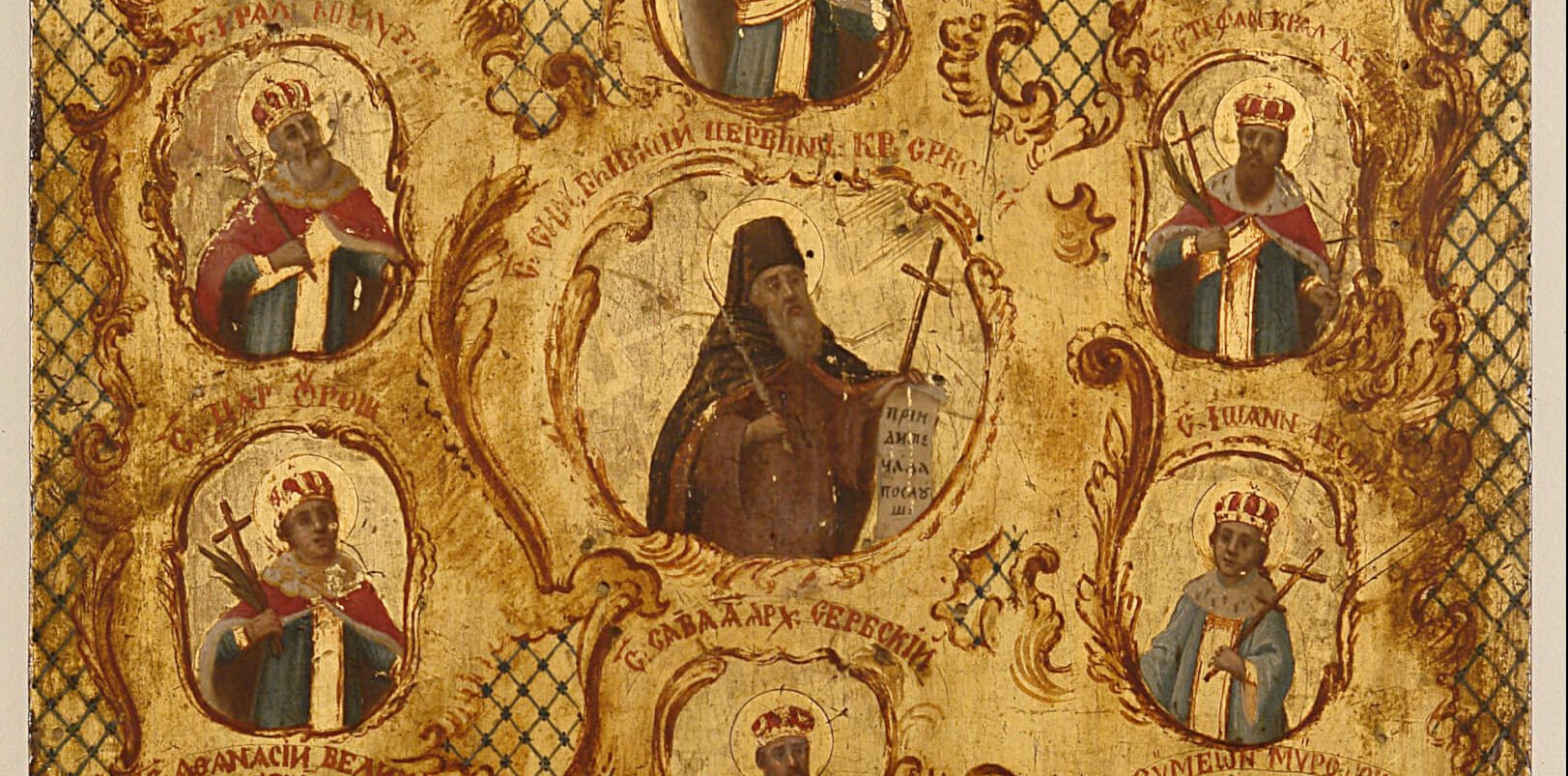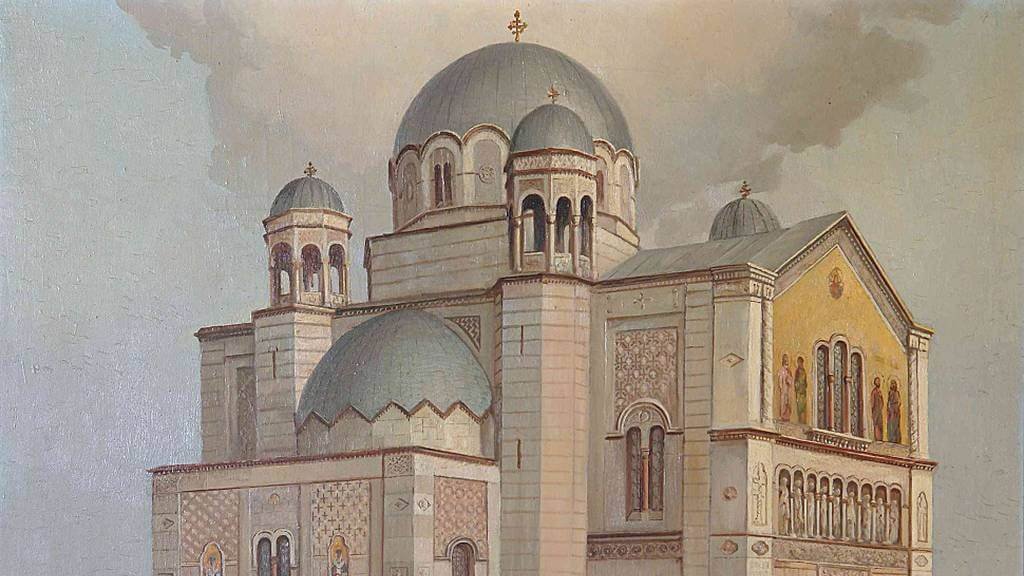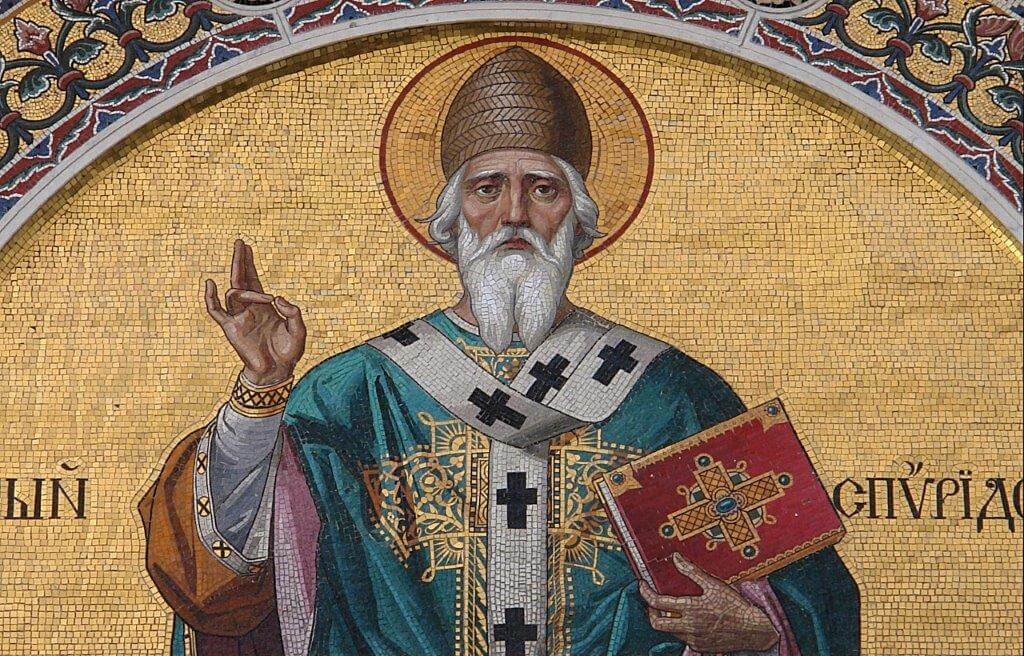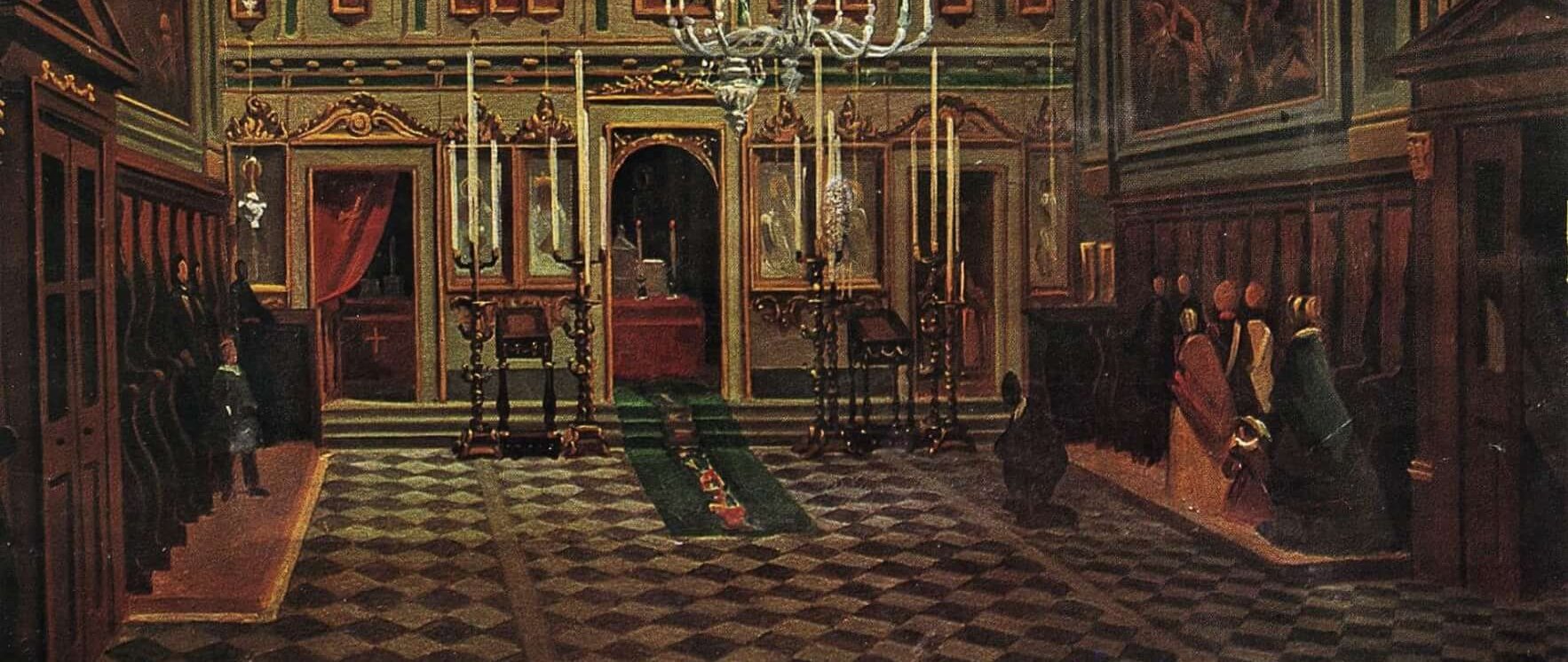One of the most important charcteristics of the Eastern Orthodox Church rite is the veneration of icons, or as some experts call it, the „theology in color”.
In the 12th century St. Sava, the most important church father and saint of the Serbian Church, canonically introduced the celebration of Slava, a ritual unique to the Serbian Orthodox Church, unknown to other religions and celebrated annually. St. Sava, son of the Grand Prince Stefan Nemanja, is still celebrated as the most important saint in the Serbian Church.
In every Serbian household an icon of the family’s patron saint is positioned at an important place of the house with a candle that always burns in front of it. Nearby, often there where other icons stand, a special space dedicated to praying and to the priest’s service is prepared.
The Slava is celebrated annually and a special, Slava Liturgy, is served on this occasion. During the Divine Service a special cake, the Slava cake, is passed from hand to hand, then cut, kissed and distributed to all family members. In this manner a family expresses both its gratitude to the patron saint for all the earthly fruits received in the past year, as well as its hope he will continue to protect it from all evils.
On Slava the priest sprinkles the household with holy water and blesses the wheat in memory and respect of the dead. At the end of the service, he cuts the Slava cake, lifts it up towards the icon while pronouncing the prayer: “We offer this, Oh, our Lord and God, for the glory and honor of Thy Saint the sake of his (the name of the Saint being honored is mentioned) and for the sake of his (her or their) intercession, accept, Oh, All-Merciful, this offering unto Thy Supercelestial Altar.”
Just as the cross is a symbol of Christianity, the icon is a typical characteristic of the Orthodoxy. Thus, in Orthodox churches and households one can find more icons than crosses; often the faithful, instead of a cross, wear a small icon around their neck or in their pocket.
These are mostly reproductions of the icon that is dearest to the family and has belonged to it for a long time. It is usually passed down from generation to generation or is received as a propitiating or blessing gift from parents.
In some cases believers choose their own icon. Usually, it is the image of a saint they feel closest to in their prayers, based on their own experience or on a family tradition, and to whom they commit themselves. Monks sometimes carry a diptych or a triptych with themselves. It is made of several icons and can be opened and closed. In that way they can travel in their thoughts to the church and in front of the iconostasis and the altar.
All previously cited objects can be referred to as “icons”. They represent the only Liturgical object that accompanies Orthodox believers wherever they go, providing them with a sense of security and belief they are capable of achievements that once seemed impossible and helping them in moments of despair that make them weak and insecure.





